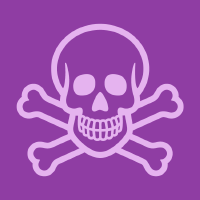Topic Menu
► Topic MenuTopic Editors

Emerging Contaminants in the Aquatic Environment
Topic Information
Dear Colleagues,
Emerging contaminants are defined as unregulated or inadequately regulated chemicals. Emerging contaminants include mainly chemicals found in pharmaceuticals, personal care products, industrial and household products, industrial additives, surfactants, and solvents. Many of them are used and released continuously into the environment, and some may cause chronic toxicity, endocrine disruption in humans and aquatic wildlife, and development of bacterial pathogen resistance.
Most of these emerging pollutants are encountered in waters via discharge of industrial and domestic sewage. The pollution of emerging pollutants in an aquatic environment is of increasing interest. Scientific knowledge and understanding of their fate, transport, and toxicity as well as of their presence in water resources and wastewater and their pathways and accumulation in the aquatic environment are still very scarce. There is thus an urgent need to strengthen scientific knowledge and adopt appropriate technological and policy approaches to monitor emerging pollutants in environmental matrixes, assess their potential human and ecosystem health risks, and prevent and control their disposal to water resources and the environment. This Special Issue will provide a platform to showcase the research progress on aforesaid fields.
The topics of the issue include but are not limited to:
- Technical measurements of emerging chemicals in aquatic environmental matrices;
- Occurrence, transport, and fate of emerging chemicals in aquatic environments;
- Bioaccumulation and biotransformation of emerging chemicals in aquatic organisms;
- Toxicity of emerging chemicals;
- Ecosystem health risk assessment of emerging chemicals in aquatic environments.
Prof. Dr. Xiaojun Luo
Dr. Zhiguo Cao
Topic Editors
Keywords
- emerging contaminants
- aquatic environment
- toxicity
- fate and transport
- bioaccumulation
Participating Journals
| Journal Name | Impact Factor | CiteScore | Launched Year | First Decision (median) | APC |
|---|---|---|---|---|---|

Journal of Marine Science and Engineering
|
2.9 | 3.7 | 2013 | 15.4 Days | CHF 2600 |

Pollutants
|
- | - | 2021 | 21.7 Days | CHF 1000 |

Toxics
|
4.6 | 3.4 | 2013 | 14.7 Days | CHF 2600 |

Water
|
3.4 | 5.5 | 2009 | 16.5 Days | CHF 2600 |

International Journal of Environmental Research and Public Health
|
- | 5.4 | 2004 | 29.6 Days | CHF 2500 |

MDPI Topics is cooperating with Preprints.org and has built a direct connection between MDPI journals and Preprints.org. Authors are encouraged to enjoy the benefits by posting a preprint at Preprints.org prior to publication:
- Immediately share your ideas ahead of publication and establish your research priority;
- Protect your idea from being stolen with this time-stamped preprint article;
- Enhance the exposure and impact of your research;
- Receive feedback from your peers in advance;
- Have it indexed in Web of Science (Preprint Citation Index), Google Scholar, Crossref, SHARE, PrePubMed, Scilit and Europe PMC.


